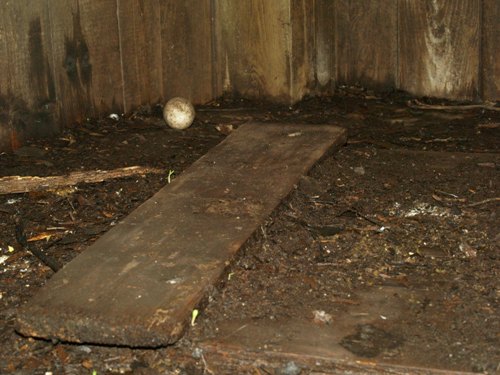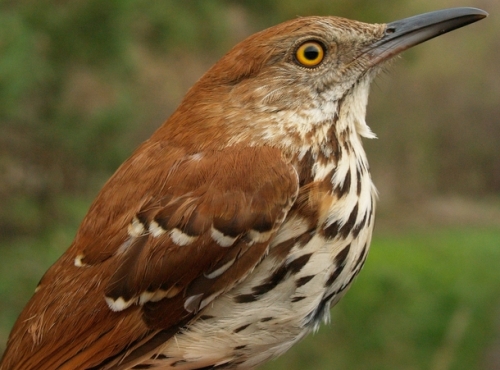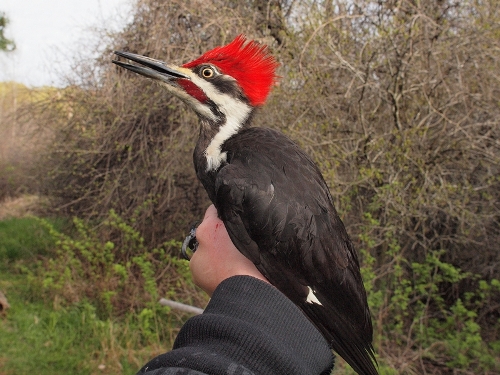|
|
THIS WEEK |
THIS SPRING |
2011 TOTAL |
SITE TOTAL |
|
# birds (and species) banded |
140 (23) |
295 (32) |
366 (36) |
31935 (107) |
|
# birds (and species) repeat |
15 (7) |
34 (13) |
42 (13) |
5549 (68) |
|
# birds (and species) return |
4 (4) |
26 (12) |
50 (12) |
857 (37) |
|
# species observed |
78 |
98 |
103 |
202 |
|
# net hours |
407.5 |
1111.0 |
1134.0 |
50751.1 |
|
# birds banded / 100 net hours |
34.4 |
26.6 |
32.3 |
62.9 |
|
|
Note: table does not include nocturnal banding (owls) |
Banders-in-charge: Simon Duval, Gay Gruner
Intern: Matthew Von Bornhoft
Assistants: Nicolas Bernier, David Davey, Leah Den Besten, Rui De Jesus, Philippe Dunn, Jeff Harrison, Noemie Laplante, Le Duing Lang, Francine Marcoux, Barbara MacDuff, Betsy McFarlane, Chris Murphy, Benoit Piquette, Kate St-Jean, Patricia Stotland, Elise Titman, Rodger Titman
Notes: Although we lost a full day and most of a second to rain, it was a productive week at MBO for this time of year, with over 50 species observed per day over the last three days, and a total of 78 for the week. The 140 birds banded is more than 100 above the record low of 37 in this week last year, and within a few of the record high of 148 in 2006. Interestingly, we have made several references already this spring to how observations are similar to what we observed in 2006, and it seems we haven't broken out of that pattern yet.
We added another 14 species to our list of species observed this spring, bringing our cumulative total to over 100, with another four weeks yet to go before the end of our migration monitoring program. This week's new additions were American Wigeon, Green Heron, Solitary Sandpiper, American Kestrel, Great Horned Owl, Great Crested Flycatcher, Red-breasted Nuthatch, Eastern Bluebird, Chestnut-sided Warbler, Western Palm Warbler, Black-and-white Warbler, Rose-breasted Grosbeak, Baltimore Oriole, and Bobolink. All of these except the owl were also new arrivals for 2011. The pair of wigeons swimming in the back pond was a particularly good sighting, as this species is a rare and irregular visitor to MBO, with records in only three previous years, and none before now outside of April. The influx of new migrants also contributed to 8 species being added to our list of birds banded this spring and this year: House Wren, Brown Thrasher, Western Palm Warbler, Black-and-white Warbler, Common Yellowthroat, White-crowned Sparrow, Common Grackle, and American Goldfinch. New returns for the year were Northern Cardinal and American Goldfinch.
This week’s
top 10
#
individuals banded |
mean # individuals observed daily |
1. Ruby-crowned Kinglet (30) [5] |
1. Canada Goose (143) [1] |
1. White-throated Sparrow (30) [3] |
2. Red-winged Blackbird (54) [2] |
3. Yellow-rumped Warbler (26) [7] |
3. Cedar Waxwing (28) [-] |
4. Red-winged Blackbird (15) [4] |
4. Ruby-crowned Kinglet (27) [-] |
5. Swamp Sparrow (7) [10] |
5. White-throated Sparrow (26) [5] |
6. American Robin (6) [5] |
6. American Crow (20) [4] |
7. Cedar Waxwing (3) [-] |
7. Yellow-rumped Warbler (18) [-] |
7. Common Yellowthroat (3) [-] |
8. Black-capped Chickadee (17) [6] |
9. Hairy Woodpecker (2) [-] |
9. American Robin (14) [7] |
9. Black-capped Chickadee (2) [10]
9. House Wren (2) [-]
9. Black-and-white Warbler (2) [-]
9. American Goldfinch (2) [-]
|
10. Slate-colored Junco (13) [3] |
|
On the list of species banded in week 6, Ruby-crowned Kinglet and White-throated Sparrow have each taken the top spot twice in the past four years, so it's only appropriate that this year they share the number one position. The big surprise this week is Yellow-rumped Warbler in third place. We've never before banded more than two of them in week 6 - in fact, the only time we've banded so many in one week in spring was in week 8 in 2009. Perhaps the above average numbers reflect the "bumper crop" we observed last fall; it will be interesting to see how many more we observe over the next few weeks. Red-winged Blackbird has been in the top three for week 6 in all previous years, but got pushed down to fourth place this year. Swamp Sparrows were unusually numerous in the nets this week, and a second week in a row with 6 American Robins banded extends the spring record total for that species.
For the third week in a row, we observed more Canada Geese than any other species, with Red-winged Blackbird in second place; this mirrors the results from three of the past four years (in 2008 Red-winged Blackbird got pushed down one spot by a late surge of Snow Geese). Continuing their yo-yo pattern this spring, Cedar Waxwing jumped back into the top ten all the way up at #3. just ahead of unusually strong numberse of Ruby-crowned Kinglet and White-throated Sparrow. Yellow-rumped Warbler cracked the top ten for the first time ever this early in spring, hopefully a good omen. Conversely, this is the first time we've had Slate-colored Junco remain on the list this late in the season.
|

This egg in our "bat house" represents the first confirmed breeding record of Turkey Vulture on the island of Montreal!
(Photo by Simon Duval)

Our first Brown Thrasher of the year, always an uncommon species at MBO, with a total of just 16 banded over our previous six spring seasons.
(Photo by Simon Duval)
|



